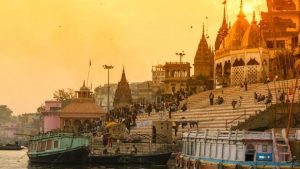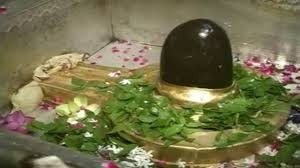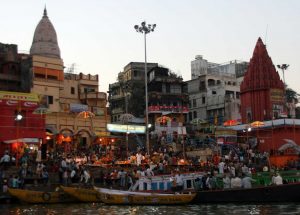India is a country with various monuments that carry the history through them. Most of these monuments are religious. The beliefs that are related to the monuments are of the times when the supernatural entities walked the earth. The stories and the legends go around these monuments talks about a time that witnessed these powers. Varanasi, a city of the Indian state Uttar Pradesh beholds Kashi Vishwanath Temple, one of the most famous Hindu temples dedicated to Lord Shiva, on the western bank of the holy river Ganga. Varanasi was also called Kashi in the ancient times and the temple derived its name from that. The temple has been managed by the government of Uttar Pradesh since 1983.

The temple has been destroyed and re-constructed throughout Indian history. The current structure was built by the Maratha ruler, Ahilya Bai Holkar of Indore in 1777. It is said that once Lord Shiva came in the dream of Rani Ahalya Bai Holkar and being a devotee of Lord Shiva, the queen got the current temple built.

The ‘Jyothirlinga’ are places where Shiva appeared as a fiery column of light. There are 12 of these Jyothirlinga and each site takes the name of the deity manifested by Shiva. These Jyotirlingas represent pillars that are beginning and endless, which symbolizes the infinite nature of Shiva. Varanasi is said to be the point in which the first jyotirlinga appeared. According to Shiva Purana, once Brahma and Vishnu argued about the supremacy of creation and Lord Shiva pierced the three worlds (Earth, Heaven, and Hell) as a jyotirlinga that is considered to be the first one amongst the twelve Jyothirlinga. And Kashi Vishwanath was built on that place.
The temple consists of smaller shrines located in a small lane, the Vishwanatha Galli near the river. Moreover, the main temple is a quadrangle and surrounded by shrines of other gods. There are different small temples for Kaalbhairava, Dhandapani, Avimukteshwara, Vishnu, Vinayaka, Sanishwara, Virupaksha and Virupaksh Gauri in the temple yard. There is a small well in the temple called the Gyaan Vapi (the wisdom well). It is said that during the invasion by the Mughals the main priest of the temple jumped in the well with the Shiv Ling to protect the Jyotirlinga.

The structure of the Kashi Vishwanat temple is composed in three parts; A spire on the temple of Lord Vishwanath, A gold dome and the gold spire on top of Lord Vishwanath carrying a flag and a trident. There is also a Sabha Griha or Congregation Hall leading to the inner Garbha Griha or Sanctum Sanctorum. The Jyotirlinga is a smooth black colored stone on a silver platform which is enshrined in the Sanctum, which is 24 inches tall and 35 inch in circumference.
Various kings and kingdoms of the Indian subcontinent made generous contributions and donations to the temple. The 7-foot high stone statue of Nandi bull of the east of the temple colonnade was gifted by the Raja of Nepal. In 1835, Maharaja Ranjit Singh of the Sikh Empire donated nearly 1 ton of gold for plating the temple’s dome, which popularized the name the Golden Temple in Varanasi.


